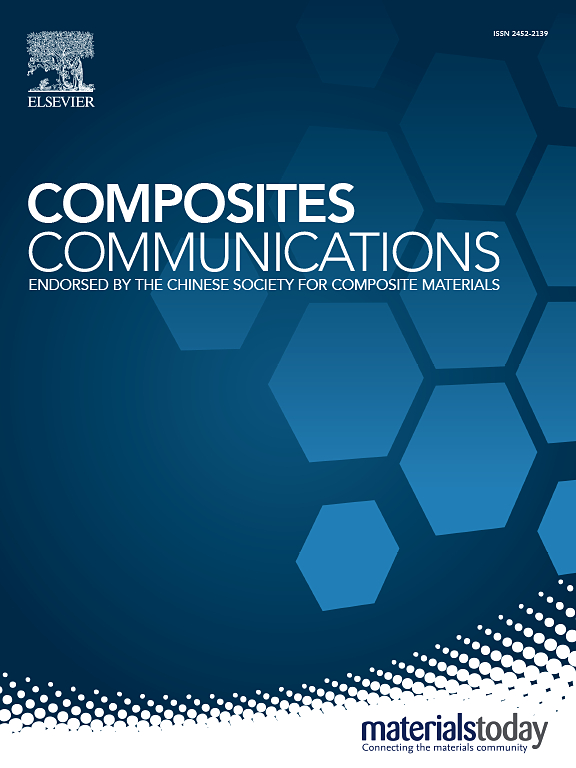Dispersed layups for improving the mechanical properties of pseudo-ductile carbon/glass interlayer hybrid composites
IF 6.5
2区 材料科学
Q1 MATERIALS SCIENCE, COMPOSITES
引用次数: 0
Abstract
Fiber-hybridization is an effective strategy to overcome the catastrophic fracture of fiber-reinforced polymer composites via achieving pseudo-ductility. However, the demonstration of pseudo-ductile behavior is limited by low carbon fiber volume fraction, i.e. low stiffness and strength, for traditional carbon/glass hybrid composites with all carbon layers centralized in the middle. In this work, a new layup concept based on layer dispersion was introduced to improve the carbon fiber volume fraction of hybrid composites while maintaining pseudo-ductile behavior. Different hybrid configurations with dispersed layups were tested experimentally and validated numerically. The results have shown that by splitting the centralized carbon layers into different dispersion units, the damage mechanisms of the hybrids can be significantly differed. Firstly, the interaction between two dispersed carbon layers was reduced with the increasing of the distance between them, which promoted more carbon layer fractures and was therefore beneficial for pseudo-ductility. Secondly, the hybrid composites tended to fail in a premature way, when the thickness of a single dispersion unit was increased to 80 μm. Compared to traditional pseudo-ductile hybrid composites, the maximum carbon layer volume fraction of pseudo-ductile hybrids with dispersed layups was up to 25.0 %, which was a 76 % improvement. As a result, the tensile modulus was increased by 16.70 % and the pseudo-yield stress was improved by 24.64 % in comparison with those of the hybrids with all carbon layers in the middle.
求助全文
约1分钟内获得全文
求助全文
来源期刊

Composites Communications
Materials Science-Ceramics and Composites
CiteScore
12.10
自引率
10.00%
发文量
340
审稿时长
36 days
期刊介绍:
Composites Communications (Compos. Commun.) is a peer-reviewed journal publishing short communications and letters on the latest advances in composites science and technology. With a rapid review and publication process, its goal is to disseminate new knowledge promptly within the composites community. The journal welcomes manuscripts presenting creative concepts and new findings in design, state-of-the-art approaches in processing, synthesis, characterization, and mechanics modeling. In addition to traditional fiber-/particulate-reinforced engineering composites, it encourages submissions on composites with exceptional physical, mechanical, and fracture properties, as well as those with unique functions and significant application potential. This includes biomimetic and bio-inspired composites for biomedical applications, functional nano-composites for thermal management and energy applications, and composites designed for extreme service environments.
 求助内容:
求助内容: 应助结果提醒方式:
应助结果提醒方式:


